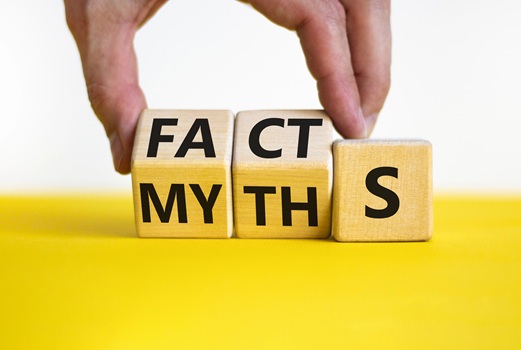
reverse mortgage in Greenville SC
The holiday season brings warmth, family traditions, and joyful moments we look forward to every year. Yet it also brings higher expenses, unexpected costs, and financial pressure that can build quickly. Although most people hope to stay within a reasonable budget, it is surprisingly easy to overspend. With thoughtful planning, however, your celebrations can remain enjoyable and meaningful without creating financial worry. For many homeowners, a reverse mortgage becomes one way to maintain stability while still embracing the spirit of the season.
Spending time with loved ones is what truly makes the holidays memorable. Even so, staying mindful of your budget helps prevent financial stress later. Because thoughtful planning leads to better results, many older homeowners explore senior home equity solutions Greenville to create more breathing room during this time of year. This approach helps protect long-term finances while still allowing room for celebrations.
Additionally, looking for creative alternatives can keep costs manageable. With just a little planning, it becomes much easier to celebrate without losing sight of your financial goals. This balance offers both comfort and confidence as the holidays approach.
Practical Ways to Save Money While Planning for a Reverse Mortgage
One of the most effective ways to reduce holiday spending is to shift the focus from buying things to building memories. Because meaningful moments rarely require expensive purchases, planning low-cost activities often brings the most joy. For example, hosting a shared dinner where everyone contributes a dish helps reduce costs while still creating togetherness. Simple traditions such as board games, classic holiday movies, and walking through decorated neighborhoods bring enjoyment without straining your budget.
At the same time, you can strengthen your long-term planning by exploring retirement income planning in Greenville SC. Many homeowners value having a flexible financial foundation that supports both everyday needs and seasonal expenses. This perspective helps you stay grounded through the busiest months of the year.
Shopping strategically is another important step. Creating a list of planned gifts and household needs prevents last-minute overspending. Since online retailers often release limited-time discounts, keeping an eye on promotions and digital coupons helps manage spending more effectively. Those who follow a holiday budget relief program often find this organized approach especially helpful.
Gift-giving can also remain meaningful without being expensive. Handmade gifts, homemade treats, and acts of service all carry personal value. Many families appreciate thoughtful gestures such as baking, crafting, or offering help with projects more than high-priced items. These alternatives allow you to stay within your budget while still expressing genuine kindness.
Decorating, Home Comfort, and Seasonal Spending With Reverse Mortgage Support

Reverse mortgage lender in Greenville SC
Decorating your home for the holidays does not have to involve costly purchases. Repurposing items you already own, using natural materials like pinecones or greenery, or creating handmade décor helps you achieve a festive look with minimal expense. This approach allows your creativity to shine while also keeping spending in check. Many households in Greenville SC appreciate décor that feels personal and meaningful rather than store-bought.
Energy costs also climb during colder months, but small improvements can make a noticeable difference. Applying weather-stripping, unplugging unused electronics, and using LED lights are practical ways to reduce energy consumption. Some homeowners explore home equity access in Greenville SC to make upgrades that improve long-term energy efficiency and comfort.
Being mindful of small habits also helps. Because energy bills rise from heating, cooking, and lighting, staying aware of how your home uses power allows you to make simple adjustments that add up over time. This helps maintain comfort throughout the season.
How a Reverse Mortgage Creates Long-Term Financial Stability
Although holiday spending lasts only a few weeks, financial needs continue throughout the year. That is why many seniors explore a reverse mortgage as a long-term tool for building stability. This type of loan allows eligible homeowners to access part of their home equity without selling their property or taking on a monthly mortgage payment.
Funds gained through a reverse mortgage can help with essential expenses such as medical bills, home updates, or everyday costs. They can also provide stability during peak spending seasons like the holidays. Homeowners must maintain property taxes, insurance, and routine upkeep, yet the flexibility offered by this option can strengthen overall peace of mind.
Those who want expert guidance often turn to Reverse Mortgage Specialist Greenville for clear explanations, professional insight, and helpful support. Their experience helps seniors determine whether this type of loan aligns with their long-term goals.
Additionally, many retirees appreciate how mortgage assistance for seniors can provide a steady source of financial confidence. This support allows individuals to enjoy their retirement years without unnecessary pressure.
Finding Joy Without Financial Stress
The holidays should feel warm, meaningful, and enjoyable. With mindful planning, thoughtful spending, and long-term financial strategies, you can celebrate with confidence. Whether you choose to make creative gifts, simplify traditions, or explore a reverse mortgage, every step you take brings you closer to a joyful, stress-free season.
Those looking for trusted, knowledgeable guidance often appreciate the detailed support provided by Reverse Mortgage Specialist Greenville. Their expertise helps you feel informed and confident as you review your financial options.
FAQs
What is a reverse mortgage and how does it help seniors?
It allows eligible homeowners to access part of their home equity as tax-free funds while remaining in the property.
Do I keep ownership of my home with a reverse mortgage?
Yes, you stay on the title as long as you maintain taxes, insurance, and the home’s condition.
How can the funds be used?
They may cover home upgrades, medical costs, holiday expenses, or monthly bills.
Does a reverse mortgage affect retirement benefits?
It usually does not affect Social Security or Medicare, though needs-based benefits should be reviewed with a professional.
Is repayment required each month?
No monthly mortgage payment is required, but the loan becomes due when the owner moves, sells, or passes away.
Who qualifies for a reverse mortgage?
Homeowners aged 62 or older who meet equity, residency, and program guidelines.
If you want a stronger, more confident financial future, now is the perfect time to explore how a reverse mortgage can support your goals. Reach out to a trusted specialist and discover how to enjoy the season with both comfort and stability.
Reverse Mortgage Specialist
Greenville, SC 29607
843-491-1436




